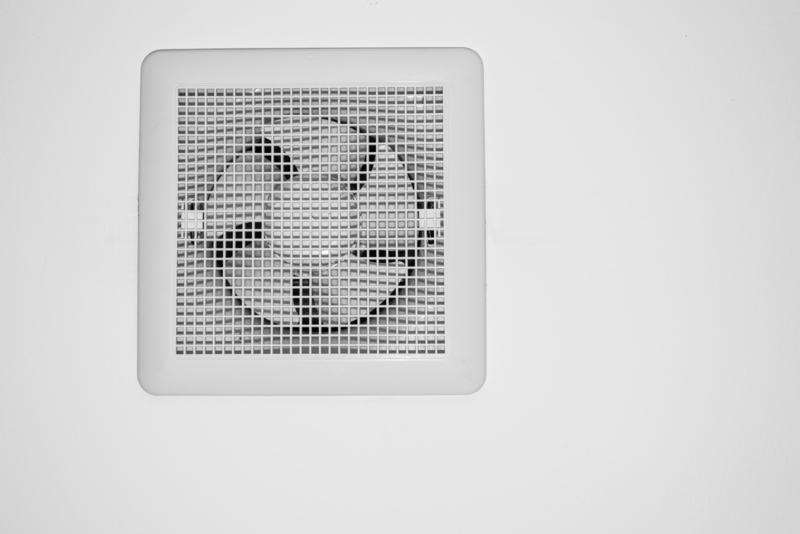Living Fresh: How Indoor Air Quality Defines Our Spaces
Posted on 08/06/2025
Living Fresh: How Indoor Air Quality Defines Our Spaces
Indoor air quality (IAQ) is rapidly becoming a defining factor in our well-being, work performance, and overall lifestyle. As we spend approximately 90% of our lives indoors, the air in our homes, offices, and communal spaces plays a critical role in our physical and mental health. This article delves deep into the science and practicalities of indoor air quality, guiding you on how to create healthier, fresher, and more vibrant living environments.
Understanding Indoor Air Quality: The Foundation of Fresh Living
When discussing what keeps our indoor spaces healthy and inviting, clean indoor air takes center stage. Indoor air quality (IAQ) refers to the condition of the air within and around buildings and structures, especially in relation to the health and comfort of building occupants. Poor IAQ has been linked to symptoms such as headaches, fatigue, respiratory issues, and aggravated allergies--making air quality in homes and workplaces a topic of urgency.
Why Focus on Indoor Air?
- We spend more than 20 hours a day indoors on average.
- Indoor pollutants can be 2-5 times, or even up to 100 times, higher than outdoor levels.
- Exposure to poor IAQ can cause long-term health effects and reduce productivity and comfort.
Key Contributors to Indoor Air Quality
Various factors and sources define the air we breathe indoors. These include:
- Outdoor air pollutants: Bringing pollutants inside through open doors, windows, or ventilation systems.
- Building materials and furnishings: Releasing volatile organic compounds (VOCs), formaldehyde, and other harmful chemicals.
- Household cleaning products: Many cleaning agents contain toxic chemicals that linger in the air.
- Combustion sources: Tobacco smoke, burning candles, gas stoves, fireplaces, and heaters can emit carbon monoxide, particulates, and nitrogen dioxide.
- Humidity and moisture: High levels encourage mold and mildew, both of which significantly deteriorate IAQ.
- Poor ventilation: Limits the outflow of pollutants and the inflow of fresh air.
- Biological contaminants: Such as dust mites, pet dander, bacteria, and pollen.

How Poor Indoor Air Quality Affects Us
Poor air quality indoors is not always visible or immediately noticeable, but the consequences can be severe.
Side effects range from mild discomfort to more serious health conditions:
- Short-term effects: Irritation of the eyes, nose, and throat; headaches; dizziness; fatigue.
- Long-term effects: Respiratory diseases, heart disease, cancer, or even chronic mental fatigue.
- Allergic reactions: Worsening of asthma or allergies due to airborne allergens.
Children, elderly people, and those with existing respiratory or heart conditions are especially vulnerable to the health impacts of poor IAQ.
Sick Building Syndrome & Beyond
Sick Building Syndrome is a phenomenon where occupants of a building experience health issues directly tied to time spent indoors. Symptoms often improve upon leaving the affected building. Proper indoor air management stands at the forefront of preventing such conditions and ensuring a fresh, healthy environment.
The Benefits of Living with Fresh Indoor Air
- Enhanced productivity: Cleaner air improves cognitive function and focus.
- Better sleep quality: High-quality air supports relaxation and restful sleep.
- Lower health risks: Reduced exposure to indoor air pollutants minimizes the risk of illnesses.
- Increased comfort: A fresh-smelling, breathable atmosphere enhances overall well-being.
- Improved mood and energy: Clean air helps you feel energized and happier throughout the day.
Common Sources of Indoor Air Pollution
Understanding where indoor air contaminants originate is crucial for taking effective action. Some common sources include:
- Building materials: Carpets, pressed-wood products, and paints may emit VOCs and formaldehyde.
- Cleaning agents: Air fresheners, disinfectants, and some detergents release chemical vapors.
- Fuel-burning appliances: Gas stoves, fireplaces, and space heaters are sources of carbon monoxide and particulates.
- Tobacco products: Cigarette smoke is a prominent indoor air contaminant.
- Biological agents: Mold, bacteria, pollen, and pet dander can all aggravate allergy and asthma symptoms.
Strategies for Achieving and Maintaining Fresh Indoor Air
1. Ventilation: The Key to Healthy Air
Proper ventilation is the most effective way to reduce pollutant concentrations. Increase natural ventilation by regularly opening windows and doors, especially after activities that release contaminants, such as cooking or cleaning. Mechanical solutions like exhaust fans, range hoods, and energy recovery ventilators (ERVs) can further enhance the exchange of indoor and outdoor air.
2. Source Control: Eliminating Pollutants at Their Origin
- Choose low-VOC and non-toxic materials for renovations and furnishings.
- Regularly maintain and repair fuel-burning appliances.
- Avoid smoking indoors and restrict the use of candles or incense.
- Use green cleaning products or make your own from safe, simple ingredients.
3. Humidity Control: Prevent Mold and Allergens
Keeping humidity between 30-50% reduces the growth of mold and dust mites. Use dehumidifiers in damp spaces like basements, ensure bathrooms are well-ventilated, and promptly address leaks or water damage.
4. Air Filtration: Upgrading What You Breathe
- HEPA filters in air purifiers and vacuum cleaners can capture allergens and particulates.
- Upgrade your HVAC system's filters and replace them regularly as recommended.
- Consider activated carbon filters to address odors and chemical pollutants.
5. Indoor Plants: Nature's Air Helpers
Houseplants not only beautify spaces but also contribute to air purification. Spider plants, snake plants, and peace lilies are popular for their ability to filter airborne toxins. However, it's important to note that plants alone cannot remove all contaminants; they should complement rather than replace other IAQ strategies.
6. Regular Cleaning: Dust and Allergen Control
- Dust and vacuum floors and upholstery with HEPA-filtered vacuums.
- Wash bedding and curtains in hot water to kill dust mites.
- Declutter to reduce places where dust and mold can accumulate.
Monitoring Indoor Air Quality: Tools and Technology
Advances in smart home technology make it easier than ever to assess and maintain healthy indoor air. Air quality monitors track levels of:
- PM2.5 and PM10: Fine and coarse particulates.
- VOC: Volatile organic compounds.
- CO2 and CO: Carbon dioxide and monoxide concentrations.
- Humidity and temperature: Environmental comfort metrics.
Many monitors provide real-time alerts and suggestions, making it simple to adjust ventilation, humidity, or air purification efforts as needed.
Fresh Indoor Spaces: The Design Perspective
The design and architecture of a space play a significant role in defining its air quality. Modern building codes increasingly emphasize air exchange and pollutant control, but interior design choices are equally impactful.
- Choose hard-surface flooring over carpets to reduce allergen accumulation.
- Opt for paints and adhesives labeled as low-emission or zero-VOC.
- Maximize the use of natural light and airflow to inhibit mold growth and keep air fresh.
- Strategically place ventilation grilles and windows to ensure consistent air circulation.
Workspaces: Boosting Productivity Through Fresh Air
The quality of air in offices is directly tied to staff satisfaction, cognitive performance, and sick leave costs. More companies are investing in living walls, air-filtration systems, and biophilic designs to promote vibrant, healthy workplaces.
Home Environments: Creating Your Wellness Retreat
Your bedroom, kitchen, and living room should all support healthy breathing. With the right habits and tools, every area in your home can become a sanctuary of clean air, supporting everything from a good night's sleep to focused work and active play.
Myths and Misconceptions About Indoor Air Quality
-
Myth: "Air indoors is always cleaner than outdoor air."
Reality: In many cases, indoor air is more polluted due to the accumulation of contaminants without proper ventilation. -
Myth: "A clean-smelling home means clean air."
Reality: Many air fresheners and scented products mask odors but add chemical pollutants. -
Myth: "Allergens are only a problem during pollen season."
Reality: Indoor sources like dust mites, pet dander, and mold are present year-round.

Future Trends: The Evolution of Healthy Indoor Environments
Innovation is shaping the future of IAQ, with smart HVAC systems, air-purifying paints, and even AI-driven home management on the horizon. As public awareness grows, it's likely that regulations and building standards will further elevate the importance of healthy indoor air, changing how we construct and inhabit our spaces.
Conclusion: Breathe Easy, Live Better
Living fresh is more than a trend--it's a core element of modern well-being. When you invest in improving indoor air quality, you're not just enhancing comfort; you're safeguarding your health, elevating your productivity, and enriching your daily experience.
- Audit your indoor air today.
- Implement simple, science-backed changes for cleaner air.
- Transform your home or office into a true sanctuary of wellness and vitality.
Fresh indoor air truly defines the quality of our lives and the value of the spaces we inhabit. Let every breath you take indoors be a step toward a healthier, happier you.



